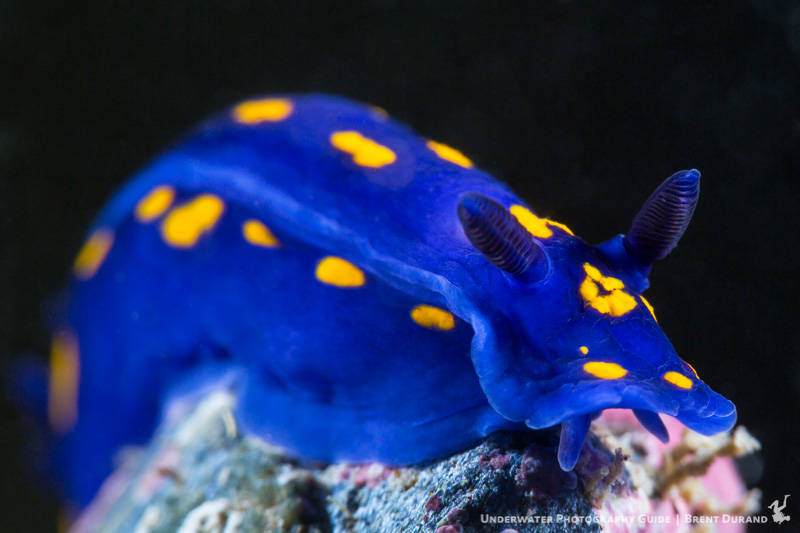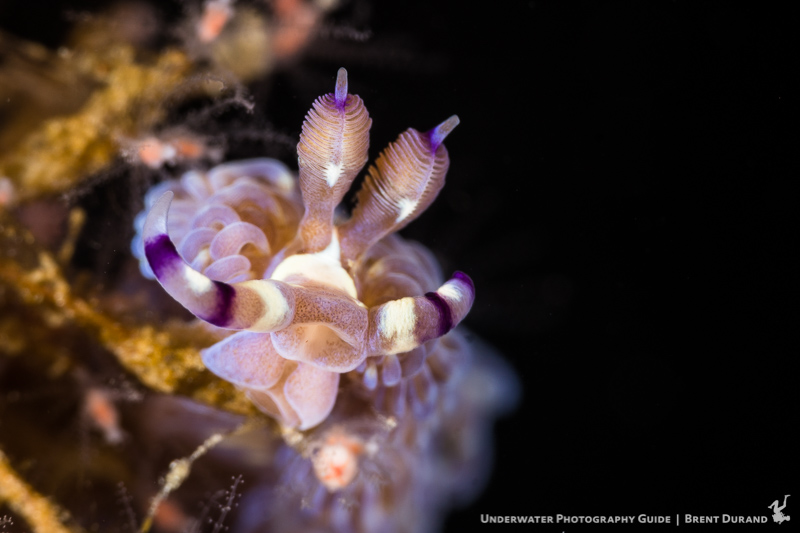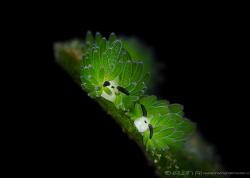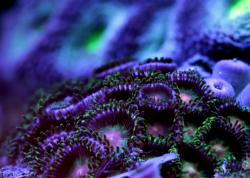Basic Breakdown: Nudibranch Defenses
Nudibranchs are a favorite subject of most underwater macro photographers, representative of such colors, contrasts, shapes and patterns that cameras will turn themselves on in their sleep to shoot them (well, not really, but the nudis really are that cool).
Some nudibranchs are the size of your fist while others are the size of a grain of sand. Some are so bright you can see them from the surface, and some seem to remain hidden even when you're looking right at them. Nudibranchs live on sand and on the reef. They crawl and can even swim in the water column.
As divers and photographers, we start taking pride in being able to find an ever-increasing variety of nudibranchs as our eyes grow accustomed to the tireless search for macro life.
In fact, we love nudibranchs so much that we would think they're a favorite tasty snack for the local reef fish. But they're not. In fact, no one messes with the nudibranchs.* So why is that?
Nudibranch Defenses
Like all species, nudibranchs have evolved several different defense techniques. Some have simply become so camouflaged and criptic that they're virtually impossible to spot. Reef life swims right by them. The phyllodesmium in the photo below has cerata that mimic the grasping polyps of its home (and food source) - xenia coral. To find these nudibranchs, you need to watch the xenia coral very closely in order to locate a tiny section that might not be pulsating like the rest. That is your nudibranch. Finding the rhinophores is the next challenge!
Other nudibranchs are nocturnal, making them much more difficult to find. The famed Spanish Dancer is a noctural nudibranch, although its size is certainly not discrete. Others simply live under stones, rocks and coral debris - places where predators generally won't be searching, even in the daylight.

Now for the fun stuff. Some nudibranchs choose chemical warfare as their primary defense.
Dorid nudibranchs will often absorb a bitter chemical taste from the sponges they eat. Any fish that picks them up will probably decide that they would prefer eating something else.

Nudibranchs that feed on hydroids have the most special defensive skill. These slugs chow down on the hydroids' own defensive stinging cells and then repurpose them as their own! The stinging cells do not affect the nudibranch as their are swallowed and slowly moved into the tops of the pointy appendages of their back (the cerata). When a predator touches or tries to eat a nudibranch using these stinging cells, they will quickly spit that nudibranch back out. Don't believe it? Check out this photo sequence of Nudibranch Self Defense in Action, where a fringehead tries to eat a hermissenda nudibranch and quickly changes its mind.
All these nudibranch defenses are quite impressive. I certainly wouldn't want to eat them, and so I guess I'll just stick with photographing them for now.
* Fun Fact: Some nudibranchs are carnivorous, choosing to eat other nudibranchs.
Learn More about Nudibranchs



RECOMMENDED ARTICLES
SUPPORT THE UNDERWATER PHOTOGRAPHY GUIDE:
The Best Service & Prices on u/w Photo Gear
 Visit Bluewater Photo & Video for all your underwater photography and video gear. Click, or call the team at (310) 633-5052 for expert advice!
Visit Bluewater Photo & Video for all your underwater photography and video gear. Click, or call the team at (310) 633-5052 for expert advice!
The Best Pricing, Service & Expert Advice to Book your Dive Trips
 Bluewater Travel is your full-service scuba travel agency. Let our expert advisers plan and book your next dive vacation. Run by divers, for divers.
Bluewater Travel is your full-service scuba travel agency. Let our expert advisers plan and book your next dive vacation. Run by divers, for divers.

































